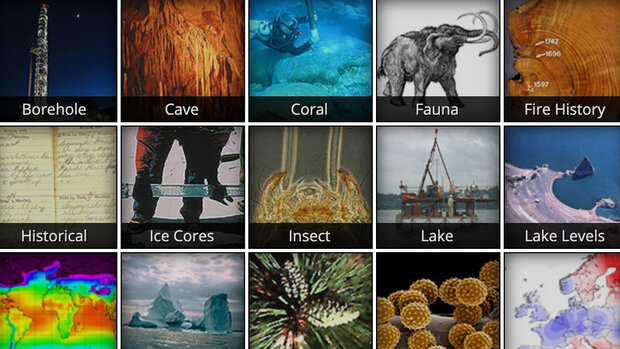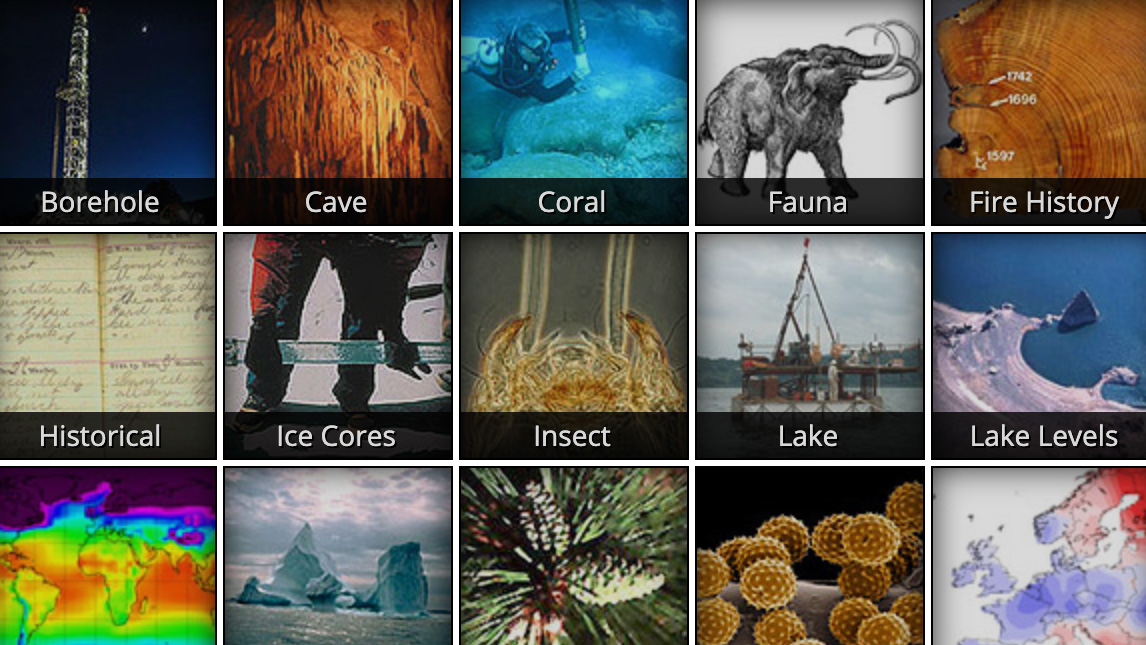Some organisms and environments produce natural records of the past. Paleoclimatology is the study of past climate from these natural records; these records provide evidence of climate conditions from hundreds to millions of years ago.
Where do these data come from?
Paleoclimatology data are derived from natural sources such as tree rings, cave deposits, ice cores, fire history, coral growth bands, pollen, stalagmites, and ocean and lake sediments. These proxy climate data extend the weather and climate information archive by hundreds to millions of years. This is the world's largest archive of paleoclimatology data, with contributions from the international scientific community. The data include geophysical or biological measurement time series and some reconstructed climate variables such as temperature and precipitation.
-
What can I do with these data?
Search the database for types, dates, or specific locations. View results online, or download data to map or graph.
- Use tree ring data to reconstruct drought patterns of the past
- Use borehole data to reconstruct temperature patterns in the Arctic tundra
How do I use the site?
Use the selection menus to:
- Select the data type
- Select the region of interest
-
Data Format(s)TXT (ASCII), Other
Access Type Link & Description Locator A range of tools for finding and accessing paleoclimatology data. -
Documentation Type Link & Description General Defines measured variables by describing the quantity measured, the material on which it was measured, reported error, units, analytical or statistical methods, transformations made to raw data, reconstructed seasonality, data type, and data format. These terms make data easier to discover, use, and reuse within a variety of programs and software. -
Data TypeModel, PaleoclimateAncillary Variablespaleoclimatology, proxy, proxiesScience OrganizationNOAA NCDCEmailpaleo@noaa.gov
-
Paleoclimate data are climate records found in nature, known as proxy records.
To access the records found in tree rings, corals, sediments, and ice, scientists use coring devices. From these cores, layers can be analyzed for their chemical composition and other clues of ancient temperature and precipitation patterns.
 Click to see more detail
Click to see more detail
